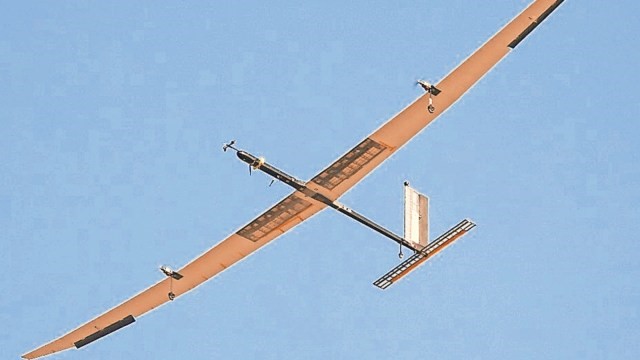Description

Disclaimer: Copyright infringement not intended.
Context
The successful test flight of India's solar-powered "pseudo satellite," known as the High-Altitude Pseudo Satellite (HAPS), marks a significant advancement in the country's aerospace capabilities.
Details
- HAPS is an unmanned aerial vehicle (UAV) designed to operate at extremely high altitudes, ranging from 18 to 20 kilometers above the ground.
- It is powered by solar energy, allowing it to remain airborne for extended periods, potentially months or even years, akin to the functionality of a satellite.
- The HAPS project is led by the National Aerospace Laboratories (NAL) in Bengaluru, India.
- The recent successful test flight of a prototype, conducted at the Challakere testing range in Karnataka, demonstrates India's progress in developing this cutting-edge technology.
Features and Capabilities
- Altitude and Endurance:
- HAPS can fly at altitudes nearly double that of commercial airplanes, providing extensive coverage and surveillance capabilities, particularly in border areas.
- With its solar-powered propulsion, it can sustain flight for extended durations, offering advantages similar to traditional satellites but at a fraction of the cost.
- Cost-Effectiveness:
- Unlike traditional satellites that require expensive rocket launches to reach orbit, HAPS operates within the Earth's atmosphere, significantly reducing operational costs.
- Surveillance and Monitoring:
- The primary application of HAPS is for surveillance and monitoring purposes, especially in remote or sensitive areas like border regions.
- It offers continuous coverage and can detect changes or movements on the ground, enhancing situational awareness and security.

Significance
- Strategic Importance: HAPS enhances India's strategic capabilities by providing a cost-effective and versatile platform for surveillance and reconnaissance.
- Border Security: In light of geopolitical tensions and security challenges, HAPS can play a crucial role in monitoring border areas and safeguarding national interests.
- Disaster Response: HAPS can be deployed for disaster management and response efforts, providing real-time data and communication support in areas affected by natural calamities.
- Telecommunications Infrastructure: In remote or underserved areas, HAPS can serve as a temporary or backup solution for providing mobile communication networks, especially during emergencies.
Global Context
- International Development: India joins a select group of countries, including China, South Korea, the UK, and the US (through NASA), in developing HAPS technology.
- Collaborative Efforts: Collaboration between government agencies, research institutions like NAL, and private companies is driving innovation and progress in the field of HAPS technology.
- Commercial Opportunities: Beyond national security and defense applications, HAPS technology holds potential for commercial use, including telecommunications, environmental monitoring, and scientific research.
MUST READ ARTICLES:
https://www.iasgyan.in/daily-current-affairs/unmanned-aerial-vehicle-uav
https://www.iasgyan.in/daily-current-affairs/autonomous-flying-wing-technology-demonstrator#:~:text=Development%20Origins%3A%20The%20UAV%20was,six%20meticulously%20planned%20flight%20trials.
|
PRACTICE QUESTION
Q. HAPS has the potential to revolutionize various sectors, from national security to disaster response and telecommunications. Comment. (15 marks)
|















